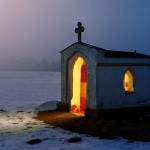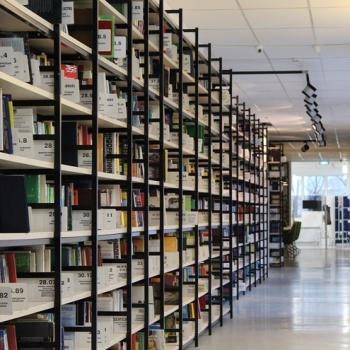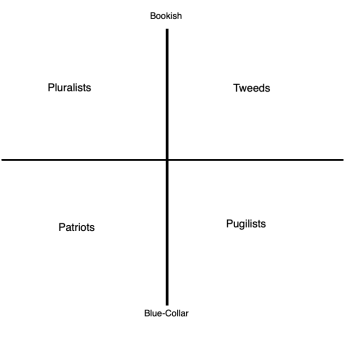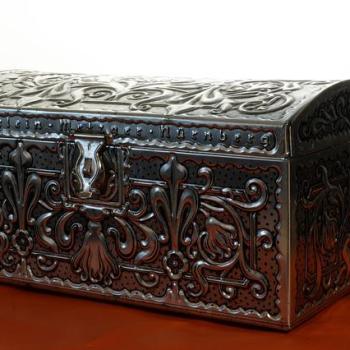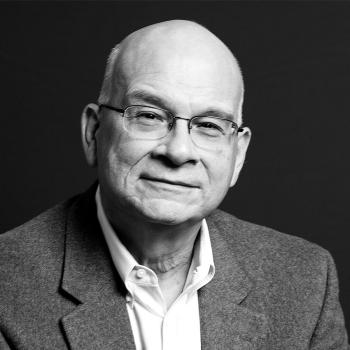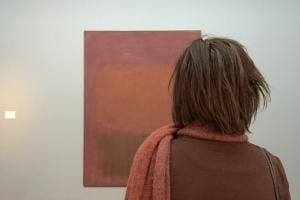 A few months ago, haunted by Mark Rothko’s ethereal canvases after a visit to Washington, D.C.’s Phillips Collection, I wrote the first draft of the piece that eventually became “Rothko and the Beauty of Becoming.” Since then, a good deal has changed: I’ve done a lot more reading on the philosophy and trajectory of modern art (and on Rothko’s career). I’ve spent some time reflecting on the legendary painter’s own approach to art. And, of course, the world has found itself in the throes of a pandemic that’s confined the majority of us to our homes and left us with lots of time for reflection.
A few months ago, haunted by Mark Rothko’s ethereal canvases after a visit to Washington, D.C.’s Phillips Collection, I wrote the first draft of the piece that eventually became “Rothko and the Beauty of Becoming.” Since then, a good deal has changed: I’ve done a lot more reading on the philosophy and trajectory of modern art (and on Rothko’s career). I’ve spent some time reflecting on the legendary painter’s own approach to art. And, of course, the world has found itself in the throes of a pandemic that’s confined the majority of us to our homes and left us with lots of time for reflection.
Above all else, this pandemic has cast the fragility of life into sharp relief—and that recognition accentuates the tragedy of the fact that, in 1970, Rothko took his own life. I wish I could’ve crossed paths with him at some point, to hear more about the existential force of his project and discuss whether there might possibly be an approach to life that could ground his longing for unity in the face of modernist fragmentation.
In the midst of this current chaos, my wife and I recently moved from our city apartment into a house in the heart of suburbia. And at some point, while assembling the umpteenth piece of flat-box furniture, I decided that an anthology of Rothko’s paintings belonged on our new coffee table. After all, just as Homer’s Odyssey captures universal themes within the literary style of a particular historical moment, so too does Rothko’s art.
A few days ago, I spent some time paging through this anthology—and despite my previous familiarity with the painter’s work, I noticed something I’d never seen before. As Rothko’s career progressed, the style of paintings for which he is best known—his striking rectangular fields of color juxtaposed against color—began to change.
The most haunting dimension of Rothko’s paintings, for most people, has to be their “fuzziness”: the blurred boundaries between color shades, suggesting that the central geometric form is a thing that has emerged, but only momentarily, from its surrounding void. But that “fuzziness” was absent from the paintings produced by Rothko toward the very end of his life. In its place were only stark, contrasting boundaries between contrasting colors. No longer was there a surrounding unity “lapping at the edges” of a foregrounded rectilinear form, but merely an absolute disharmony. Philosophically speaking, this turn suggests a collapse of thought into the immanent, a depiction of a univocal frame of reference incapable of rising above the affirmation of difference.
But, of course, that is not the end of the story. At the time of his passing, Rothko was involved with the construction of what would become the Rothko Chapel in Houston, Texas—an octagonal structure, funded by Catholic financiers John and Dominique de Menil, that was specifically intended to serve as an ecumenical space for religious reflection. Such a purpose, of course, required a distinctly universalizing approach to aesthetics—and this was exactly the intuition that guided Rothko’s artistic work for the chapel’s interior.
The fourteen Rothko paintings that line the inside of the chapel’s interior fall into two categories. On one hand are canvases epitomizing the “nihilism” of Rothko’s latter-day work: black rectangles against dark canvases, with sharp differentiation between color shades and none of the “blurring” that characterized Rothko’s earlier work. Denied here is any possibility of genuine aesthetic unity, or even unity-amid-difference: there is only clash and contrast.
But the other category is something quite different: the paintings that are situated foremost in the chapel, arranged in triptych form, are plum-colored canvases of a single, unitary shade—paintings composed out of myriad colors layered over one another. There is a unity here that is altogether unusual within Rothko’s canon: these paintings do not depict existential dramas of being and becoming, as in the majority of his works, bur rather an absolute tranquility, a moment where the struggle between transience and eternality has at last reached its end. I dare to think that such tranquility is what most visitors to the Chapel are, in the end, seeking.
And this means that to this day, in the heart of the Rothko Chapel, the visual representation of Unity hangs across from the icon of Alienation. And I hope—perhaps beyond all reason—that in the utmost, Rothko let himself embrace that Unity. After all, he painted it beautifully.


